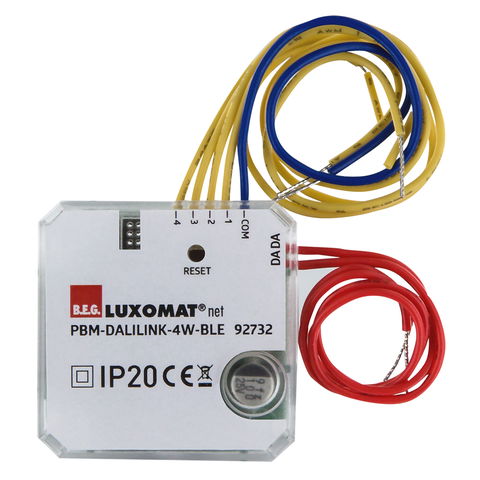In non-residential buildings, energy consumption for lighting accounts for 18.3 percent, a significant proportion of total energy requirements (BMWi, 2017c). Many companies replace their lighting systems with LED luminaires, which is the easiest way to save energy costs and achieve better illumination at the same time. The LED luminaires are often DALI-capable, which makes it easy to add an intelligent lighting control system.

The addition of a smart control system to the lighting system offers further saving potential. When occupancy detectors are used, the light is only switched on when it is really needed. Areas that previously had to be permanently illuminated for safety reasons to ensure that there was enough light available when people were present can now be illuminated according to presence. DALI also means dimmable. The light sensors integrated in the detectors measure the brightness of the room and regulate the amount of light that is actually needed, measuring the natural and artificial light levels.
When at least a 5-core cable has been used for wiring the DALI luminaires, retrofitting a DALI lighting control system such as DALI LINK is very easy. Normally such a system consists of three components: A DALI power supply, a DALI multi-master occupancy detector and a DALI push-button interface.
To connect the DALI push-button interface, the two wires of the old light switch are used for the DALI bus, but now operating as low voltage. The old switch can be replaced by conventional 2 or 4-way switches without the need for any rewiring.
The DALI power supply is installed where the power is supplied. The multi- master-capable DALI occupancy detectors are supplied with power via the DALI bus and therefore do not require an extra supply line.
If only one lighting group is operated on the DALI bus, the system can be operated directly by the preconfigured broadcast function. The main advantage of DALI, however, is the division of luminaires into lighting groups. With DALI LINK, the grouping of luminaires is also extremely easy. The push-button interface has a Bluetooth interface, so the system can be accessed via a Bluetooth enabled device such as a smartphone. The configuration of the luminaire groups is created with the appropriate app.
In rooms with a single-sided window front, it generally makes sense to configure a luminaire group facing daylight and a luminaire group facing away from daylight. The luminaire group on the window is assigned a percentage brightness value in relation to the group facing away from it. This offset value makes the lighting in the room more homogeneous and makes better use of daylight. In larger offices, it is also possible to configure workstation-related light cells. If the room layout changes, the luminaire assignment can be quickly modified by app without the need for rewiring.
Different lighting scenes can be easily configured using the app, making it easy to meet the end customer's requirements. If the 4-way push-buttons are not sufficient for the required scenes, these can also be stored for the customer in the end user access of the app.
Often concrete values for the savings potential are promised. However, an absolute value cannot be bindingly specified. In individual cases, maximum values of up to 80% may be feasible, but this is not a rule. The saving is strongly dependent on the size, the spatial conditions and what the area was being used for.
In addition to the direct savings potential, there are also indirect effects: Since the luminaires are targeted and no longer shine unnecessarily, maintenance intervals and the operating lifetime of the fitting can be extended. This is particularly interesting for LED luminaires where the LED lamps cannot be replaced later.
However, the main advantage of such intelligent DALI LINK lighting control is that it can be implemented quickly, so saving time and money, both for the end user and the installer.
